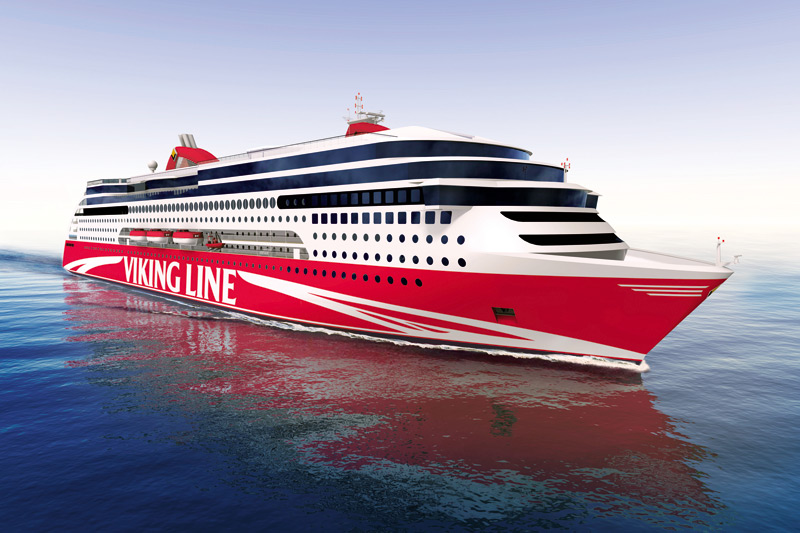 The basic choices to meet ECA SOx emission targets are to remove SOx from a ship’s exhaust as an after-treatment, burn very low sulfur fuel that currently meets ECA limits or burn LNG which does not contain sulfur.
The basic choices to meet ECA SOx emission targets are to remove SOx from a ship’s exhaust as an after-treatment, burn very low sulfur fuel that currently meets ECA limits or burn LNG which does not contain sulfur.
The first large LNG-fueled passenger vessel entering service on the Baltic Sea in 2013 will meet all ECA requirements. According to Tony Ohman, Viking Line’s senior vice president of marine operations & newbuilding, the ship will be “the most environmentally sound large passenger ferry in the world.”
Viking Line made the decision to eliminate SOx emission concerns for its new 57,000-ton ferry (operating in the Baltic) by using LNG as fuel.
The ship’s prime mover is the Wartsila 8L50DF dual-fuel diesel engine with eight inline cylinders. The 50DF diesel operates on the lean-burn principle for reduced NOx emissions. The LNG fuel system will use Wartsila’s LNGPac equipment, including two pressurized storage tanks of the Type C design that is cylindrical in shape with dished ends.
Another four-vessel newbuild program using LNG gas for propulsion due in 2012 is for Norway’s Torghatten Nord. Specified are Rolls-Royce lean-burn Bergen engines. The rich gas/air mix in a pre-combustion chamber is ignited and forms a strong ignition source for the very lean mixture in the cylinder allowing power to be increased with efficiency and reduced emissions. The Roll-Royce position is that “LNG is set to become an important marine fuel of the future.” Oddbjorn Eliassen, Rolls-Royce Merchant president said the technologies, “will deliver significant improvements in fuel efficiency and reductions in emissions.”
Older vessels will require fuel switchover equipment for dual-fuel operation or approved exhaust gas treatment systems. Continuing R&D programs are advancing scrubber and SCR technologies to offer alternatives to low sulfur fuels.
The American Bureau of Shipping cautions that, “some design modifications and operational adjustments may be necessary…where these engines/equipment are capable of operating on MGO, though originally designed to operate on HFO, a well-designed and efficient change-over procedure to and from MGO needs to be followed in order to maintain engine/equipment safety and availability.”
For much of cruise industry, its commitment to lower emissions has resulted in less use of HFO in favor of lower sulfur content residual fuels. On entering ECA waters, dual-fuel diesel oil systems allow switching over to a suitable low emissions compliant.
Excerpt from Cruise Industry News Quarterly Magazine: Summer 2011



